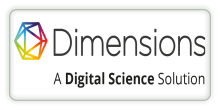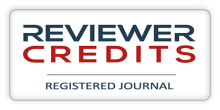IMPACT OF COVID-19 PANDEMIC ON HOSPITAL MANAGEMENT
DOI:
https://doi.org/10.29121/shodhkosh.v5.i5.2024.2836Keywords:
Hospital Management, Pandemic, Human Resource Management, Maintenance, Hospital Services, Social ImpactAbstract [English]
This study aimed to determine the impact of COVID-19 at the hospital management level and highlight the need for preparedness and effective management during pandemics and other crises. The study considered relevant areas that were significantly affected by the pandemic, such as human resources management, material supply, maintenance, hospital services, cost impact, social impact, and financial impact. The research population consisted of healthcare professionals who had experienced the pandemic and worked in hospitals across India. The sample size for this research was 324 healthcare workers. The Data was collected through a self-designed questionnaire. The study utilized the SPSS version 25 for data analysis. The regression analysis reveals that human resources management, material supply, maintenance, hospital services, cost impact, social impact, and financial impact significantly impact hospital management during the pandemic.
References
Braveman, P., et al. (2020). The Impact of the COVID-19 Pandemic on Health Disparities. Health Affairs.
Centers for Disease Control and Prevention. (2021). COVID-19 Response. Retrieved from CDC website.
Fischer, M., & Katz, R. (2013). The Role of Public Health in the 21st Century: Achievements and Challenges. Health Affairs.
Gonzalez, R., et al. (2020). Hospital Management in the Face of COVID-19: Lessons Learned and Best Practices. Journal of Healthcare Management.
International Monetary Fund. (2020). World Economic Outlook: A Long and Difficult Ascent. Retrieved from IMF website.
Jones, K. E., et al. (2008). Global Trends in Emerging Infectious Diseases. Nature. DOI: https://doi.org/10.1038/nature06536
McKee, M., & Healy, J. (2002). Hospital Management: A Global Perspective. WHO.
Morse, S. S. (1995). Factors in the Emergence of Infectious Diseases. Emerging Infectious Diseases. DOI: https://doi.org/10.3201/eid0101.950102
World Health Organization. (2005). International Health Regulations. Retrieved from WHO website.
World Health Organization. (2014). Global Status Report on Violence Prevention.
Likert, R. (1932). "A Technique for the Measurement of Attitudes." Archives of Psychology.
Couper, M. P. (2000). "Web Surveys: A Review of Issues and Approaches." Public Opinion Quarterly. DOI: https://doi.org/10.1086/318641
Beauchamp, T. L., & Childress, J. F. (2013). Principles of Biomedical Ethics. Oxford University Press.
Ranney, M. L., Grépin, K. A., & Melton, G. B. (2020). "Critical Supply Shortages—The Need for Ventilators and Personal Protective Equipment during the COVID-19 Pandemic." New England Journal of Medicine. DOI: https://doi.org/10.1056/NEJMp2006141
Krejcie, R. V., & Morgan, D. W. (1970). "Determining Sample Size for Research Activities." Educational and Psychological Measurement. DOI: https://doi.org/10.1177/001316447003000308
Field, A. (2013). Discovering Statistics Using IBM SPSS Statistics. SAGE Publications.
Costello, A. B., & Osborne, J. W. (2005). "Best Practices in Exploratory Factor Analysis: Four Recommendations for Getting the Most From Your Analysis." Practical Assessment, Research, and Evaluation.
Nunnally, J. C., & Bernstein, I. H. (1978). Psychometric Theory. McGraw-Hill.
Cronbach, L. J. (1951). "Coefficient Alpha and the Internal Structure of Tests." Psychometrika. DOI: https://doi.org/10.1007/BF02310555
Field, A. (2013). Discovering Statistics Using IBM SPSS Statistics. SAGE Publications.
Tavakol, M., & Dennick, R. (2011). "Making Sense of Cronbach's Alpha." International Journal of Medical Education. DOI: https://doi.org/10.5116/ijme.4dfb.8dfd
DeVellis, R. F. (2016). Scale Development: Theory and Applications. SAGE Publications.
Downloads
Published
How to Cite
Issue
Section
License
Copyright (c) 2024 Dr. Zaid-Bin-Aizaz Zaidi, Prof (Dr.) J.P Nautiyal

This work is licensed under a Creative Commons Attribution 4.0 International License.
With the licence CC-BY, authors retain the copyright, allowing anyone to download, reuse, re-print, modify, distribute, and/or copy their contribution. The work must be properly attributed to its author.
It is not necessary to ask for further permission from the author or journal board.
This journal provides immediate open access to its content on the principle that making research freely available to the public supports a greater global exchange of knowledge.































